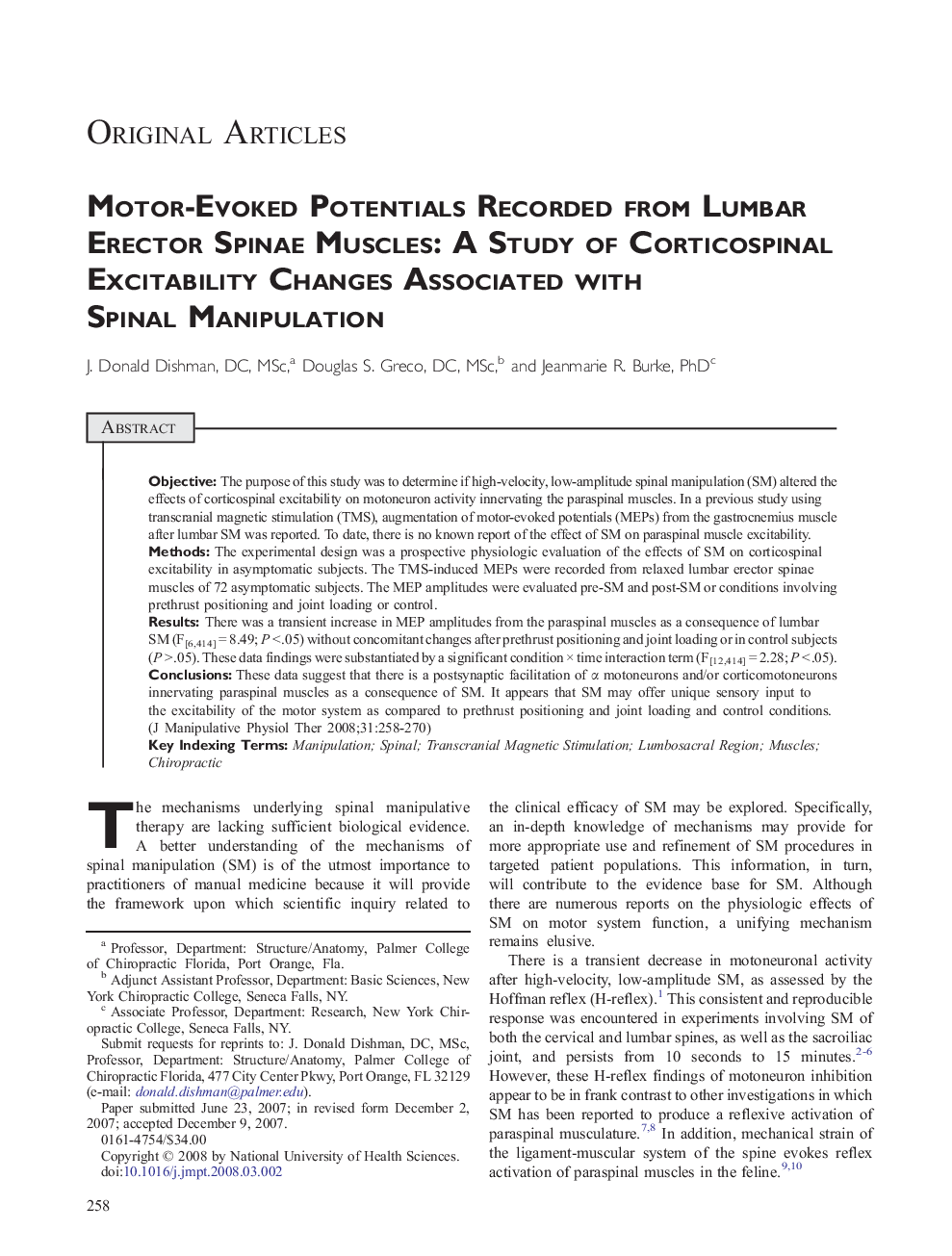| Article ID | Journal | Published Year | Pages | File Type |
|---|---|---|---|---|
| 2621511 | Journal of Manipulative and Physiological Therapeutics | 2008 | 13 Pages |
ObjectiveThe purpose of this study was to determine if high-velocity, low-amplitude spinal manipulation (SM) altered the effects of corticospinal excitability on motoneuron activity innervating the paraspinal muscles. In a previous study using transcranial magnetic stimulation (TMS), augmentation of motor-evoked potentials (MEPs) from the gastrocnemius muscle after lumbar SM was reported. To date, there is no known report of the effect of SM on paraspinal muscle excitability.MethodsThe experimental design was a prospective physiologic evaluation of the effects of SM on corticospinal excitability in asymptomatic subjects. The TMS-induced MEPs were recorded from relaxed lumbar erector spinae muscles of 72 asymptomatic subjects. The MEP amplitudes were evaluated pre-SM and post-SM or conditions involving prethrust positioning and joint loading or control.ResultsThere was a transient increase in MEP amplitudes from the paraspinal muscles as a consequence of lumbar SM (F[6,414] = 8.49; P < .05) without concomitant changes after prethrust positioning and joint loading or in control subjects (P > .05). These data findings were substantiated by a significant condition × time interaction term (F[12,414] = 2.28; P < .05).ConclusionsThese data suggest that there is a postsynaptic facilitation of α motoneurons and/or corticomotoneurons innervating paraspinal muscles as a consequence of SM. It appears that SM may offer unique sensory input to the excitability of the motor system as compared to prethrust positioning and joint loading and control conditions.
